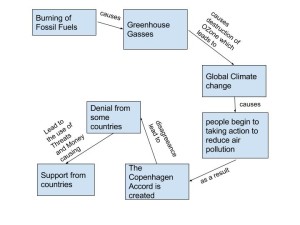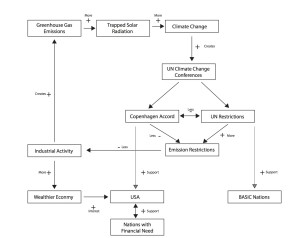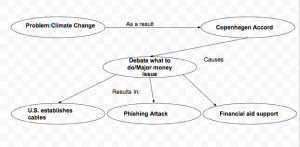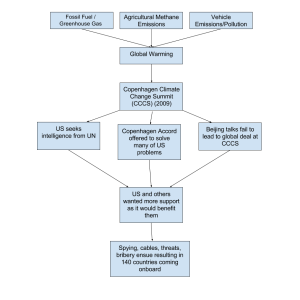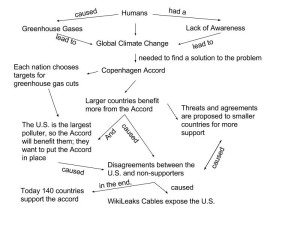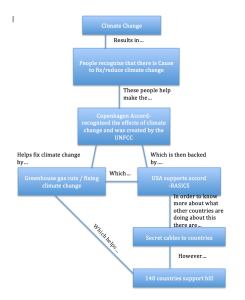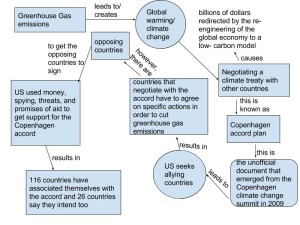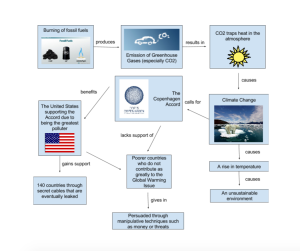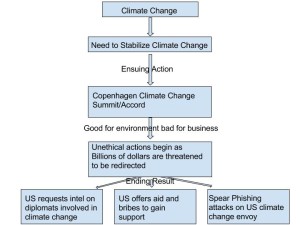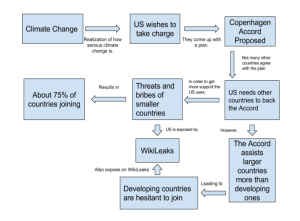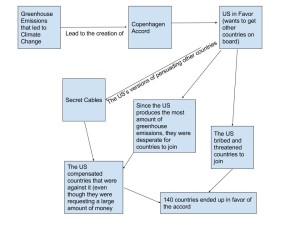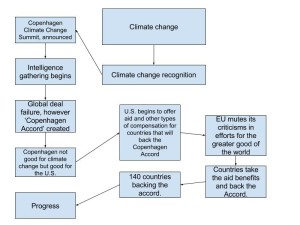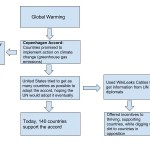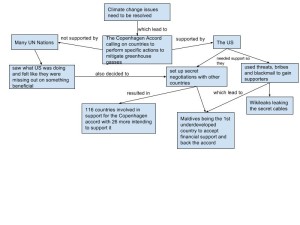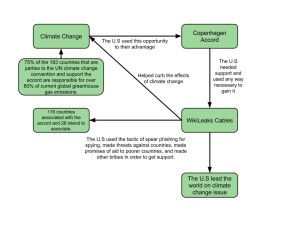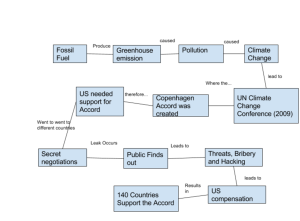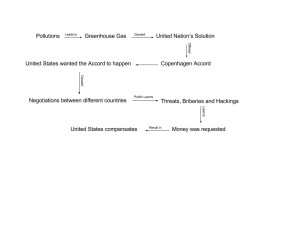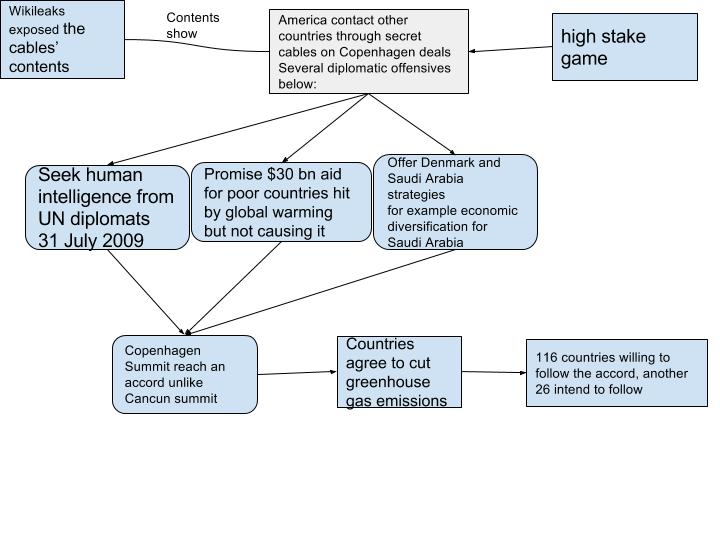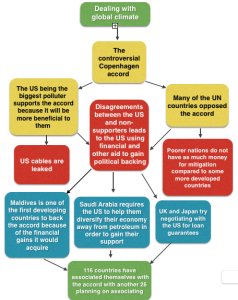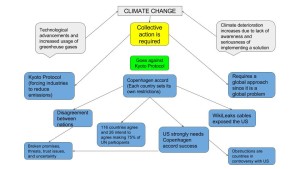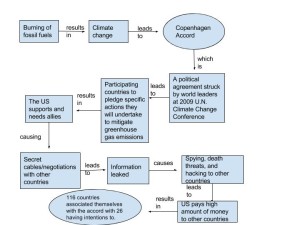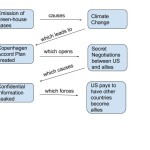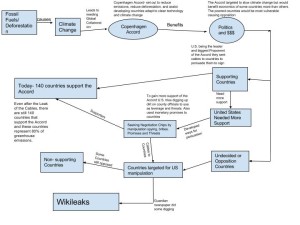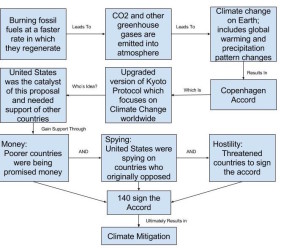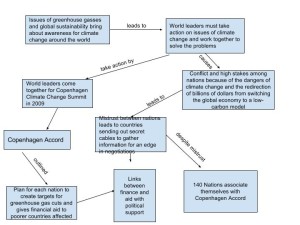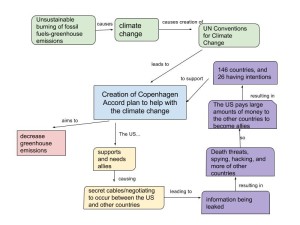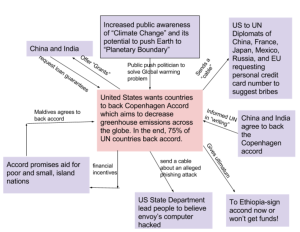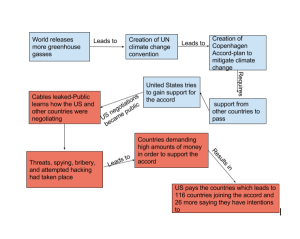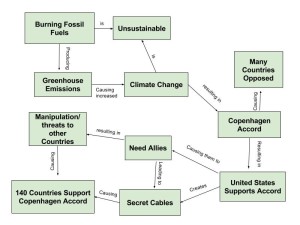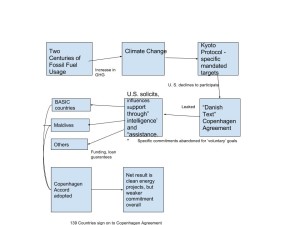
GEOG 030 Module 9 Climate Change
Centuries of fossil fuel usage have lead us to a situation in which the Earth approaches it’s planetary boundary with respect to level of greenhouse gases (GHG) it can tolerate. Should we cross this boundary, the Earth will move into another state, one decidedly different than the state from which our civilization emerged. The industrial revolution, the single most important aspect of the increase in GHG’s has generated massive amounts of CO2, which in turn causes a “greenhouse effect” and disruptive changes in our environment. These changes are taking place all over the world, and represent a massive collective action problem. Therefore, the most logical approach to climate change problem would be reach a global agreement on GHG reduction. The United Nations Framework Convention on Climate Change (UNFCCC) was created in 1992 to address these issues. This framework recognized that different countries have different responsibilities, each having contributed at different rates to GHG emissions. That is, it respected the concept of distributive justice, acknowledging the rights and responsibilities of all peoples. Since the creation of the UNFCCC, annual meetings called the Conference of Parties (COPs) have been held to discuss this issue. The first agreement to come out of these COP’s was the Kyoto Protocol in 1997. This agreement recognized that richer, more developed countries contributed more, per capita, to climate change than did less developed countries. The stated goal of the Kyoto Protocol was that all developed countries cut their carbon emissions by 5.2% (vs 1990 levels) by 2012. Thus, there were agreed-upon consensus goals. The United States, however, withdrew from the negotiations and did not sign the Protocol. At Copenhagen in 2009 (COP15), the United States was a main actor in creating a different type of agreement. Using “intelligence” and promises of “assistance” and working with the BASIC nations (Brazil, South Africa, India and China) but side-stepping most other UN nations, pushed for the Copenhagen Accord. This had been foreshadowed by the leaking of “The Danish Text” which proposed that average global temperature change be limited to 2 degrees above pre-industrial levels. There were, however, no specific nation targets for reduced emissions. The agreement was non-binding and called for voluntary targets. Many developed countries were left out of the discussions and called it undemocratic, and a betrayal of procedural justice ideals. Leaked documents provided evidence that the U. S. gathered information on other negotiators which was used to provide leverage to obtain their agreement to the Accord. Eventually, 139 countries agreed to it. The result of this process was a move away from specific, nation-level emissions goals to voluntary, non-specific targets and a weakening of the overall effort to control climate change.
I am not naïve about the “rough-and-tumble” arena of global climate negotiations. Many actors in this process value “ends’ ethics over “means” ethics, using any tool at their disposal to attain their desired result. The United States has to operate in this environment. Having said that, I feel that the U. S. violated one of its’ basic tenets when it chose to obtain personal information about other negotiators and use that information as leverage to obtain their agreement to the U. S. position. Of course, negotiating from strength requires that one know as much about the other side’s position and attitudes as possible, in order to be prepared to counter their arguments. In this situation, however, the U. S. appears to have crossed an invisible line of propriety in seeking personal information about its adversaries. In a general sense, I think that the leak of the cable information is good. Transparency is, in most situations, preferable to opacity. It may also cause our government to think twice before using these techniques in the future. Am I being naïve here? Perhaps, but I believe we, as citizens, must know as much as possible about how our government works in representing us. Here, we learned the lengths to which our government went to establish an agreement which many of us believe was actually a step in the wrong direction. We certainly did not engage in an exercise of procedural justice, since many stake-holders were not included in the process and the type of agreement, voluntary and non-specific, ignores the concept of procedural justice. If we, as a nation, and a global community, are serious about combatting climate change, we will have to do much better than this.
Michael Evangelista (mae26)

